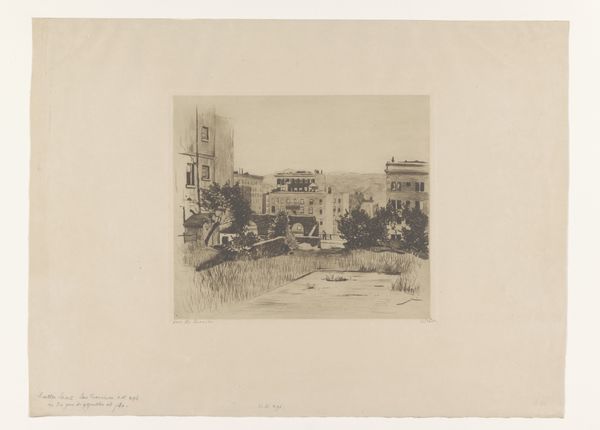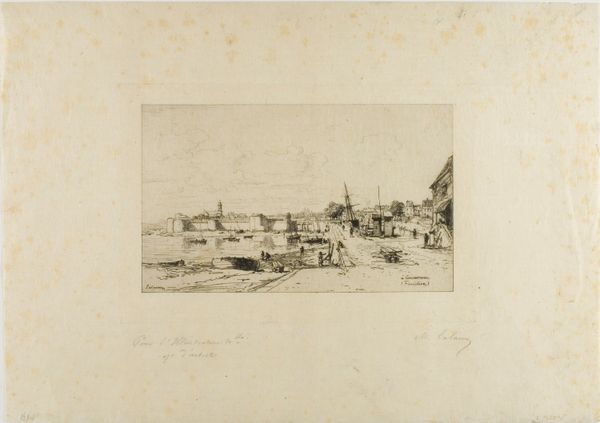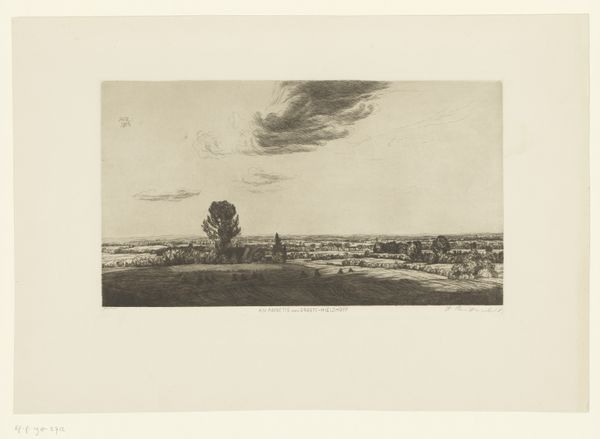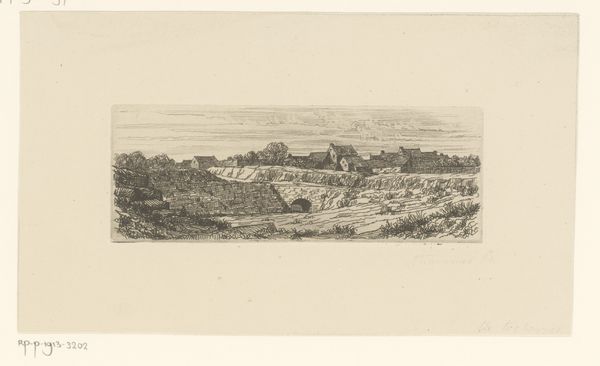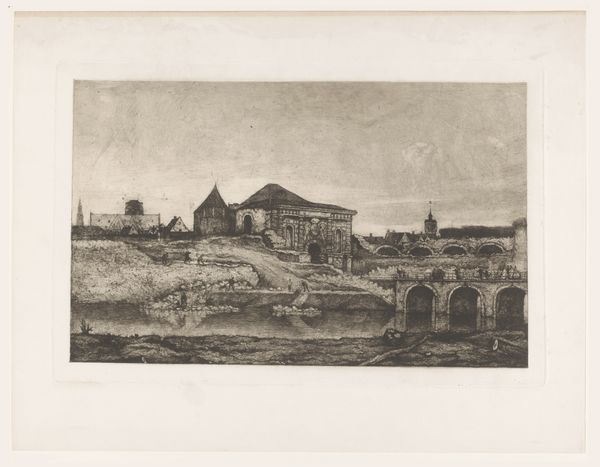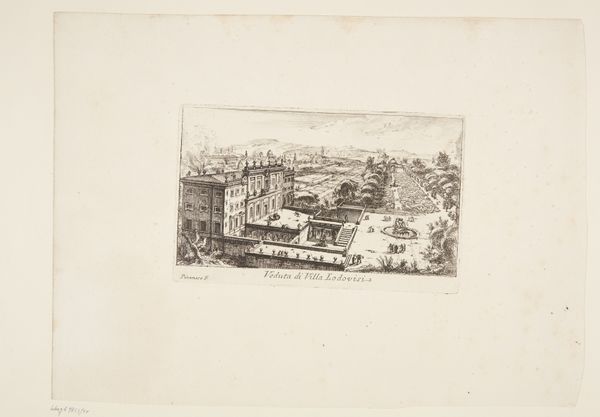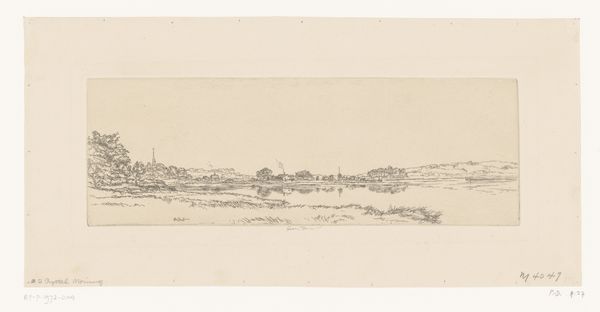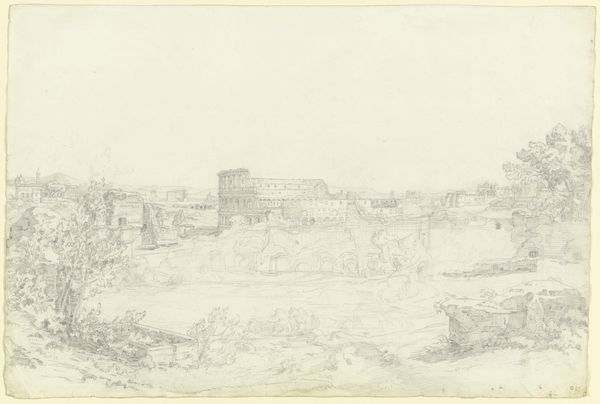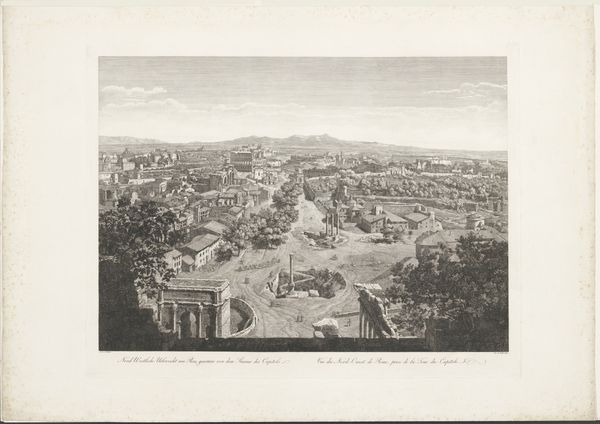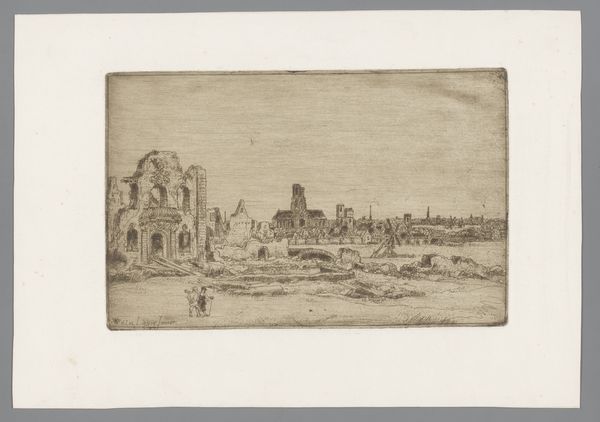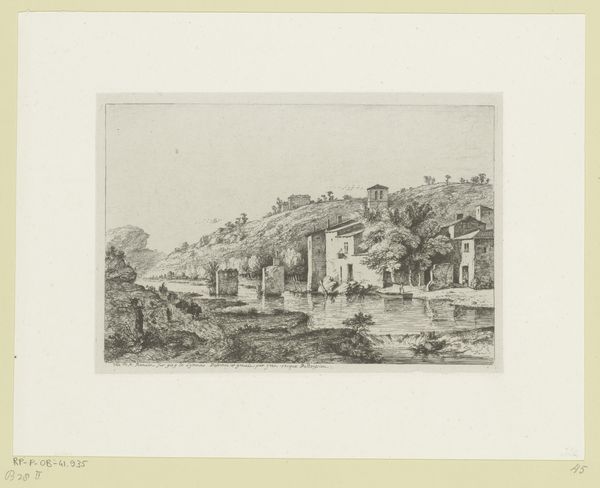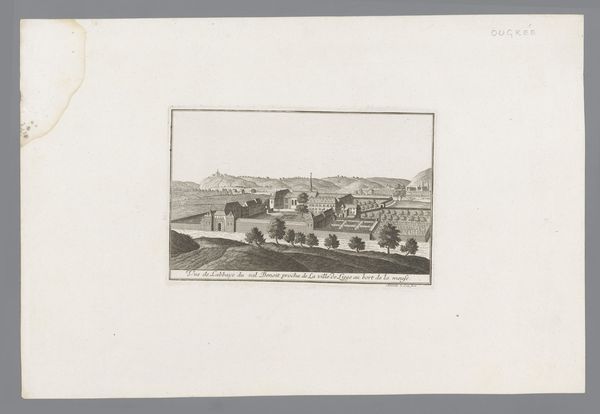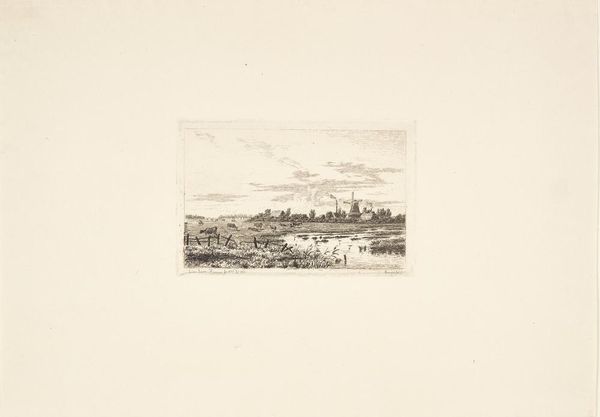
drawing, print, pencil
#
pencil drawn
#
drawing
#
16_19th-century
# print
#
pencil sketch
#
landscape
#
pencil
#
pencil work
#
realism
Dimensions: image: 8.8 × 14.1 cm (3 7/16 × 5 9/16 in.) plate: 16.2 × 20.9 cm (6 3/8 × 8 1/4 in.) sheet: 25.4 × 30 cm (10 × 11 13/16 in.)
Copyright: National Gallery of Art: CC0 1.0
Editor: Here we have Maxime Lalanne’s "Bastion 49," created in 1871 using pencil. The drawing seems to capture a vast, almost desolate landscape. What strikes me is the sense of emptiness despite the visible structures and human presence. What do you see in this piece? Curator: Indeed. The desolation you perceive speaks volumes, particularly when we consider the historical context. "Bastion 49" was created in the aftermath of the Franco-Prussian War and the Paris Commune. What might the "Bastion," a defensive structure, represent in light of these events? Editor: Perhaps the failed defense of Paris or the vulnerability of its citizens? The drawing certainly doesn’t glorify warfare. Curator: Exactly. Lalanne presents a stark, unromantic view of the war's impact on the land and its people. The visible structures aren't triumphant monuments but rather hints of fragility after conflict. Look at how he uses pencil. How might the choice of medium and style reflect the artist's social commentary? Editor: The pencil work seems so fragile, almost like a sketch fading into memory. The realism only reinforces the harshness, devoid of any embellishment. Curator: Precisely! This work critiques the romanticization of war prevalent in earlier art. Lalanne is showing us the sobering reality, the quiet aftermath where survival and rebuilding take precedence. What does that say about who gets to tell these stories? Editor: It brings a critical voice to a grand narrative. I now realize it speaks of the everyday lived experience rather than idealized heroism. Curator: I agree. Understanding the social context allows us to see "Bastion 49" not just as a landscape, but as a powerful commentary on the human cost of conflict. Editor: I'm taking away from this how art becomes a document to challenge the political stance through personal experiences. Curator: And it invites us to reconsider whose stories are prioritized in historical accounts.
Comments
No comments
Be the first to comment and join the conversation on the ultimate creative platform.

